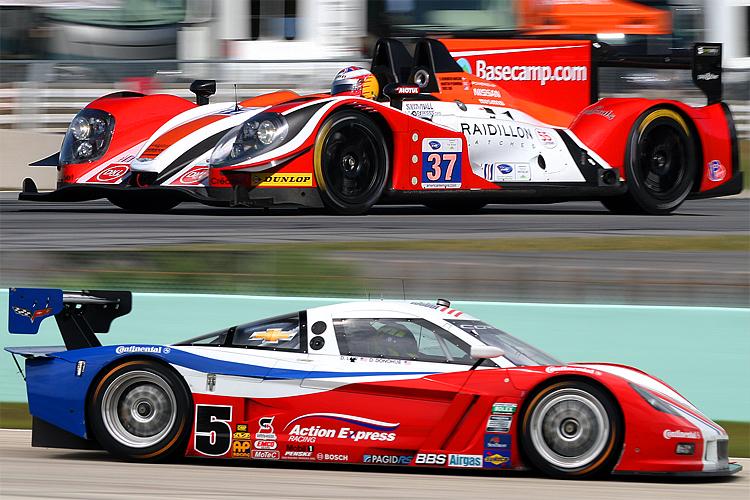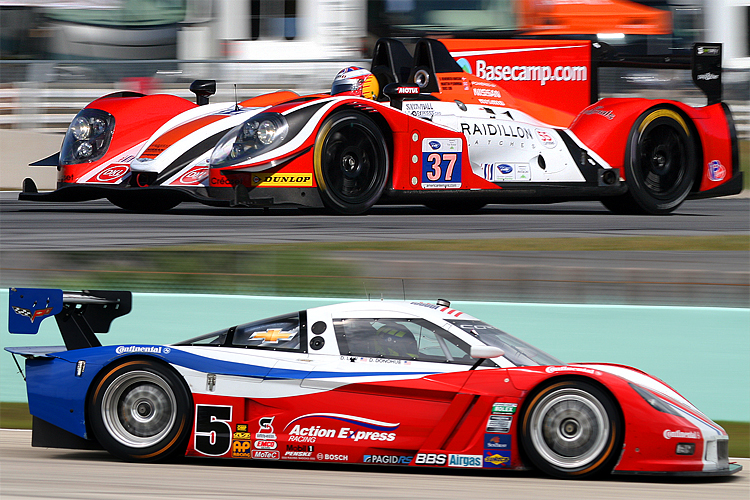While sports car fans, team owners, and car manufacturers quiver with anticipation, an announcement about the class structure of the new combined American Le Mans Series/Rolex Sport Car Series is repeatedly delayed.
NASCAR purchased the International Motor Sports Association in September, with the intent to merge its popular but financially unsuccessful American Le Mans Series with NASCAR’s Grand Am Rolex series; Rolex was far less popular and surviving on NASCAR subsidies.
Officials of the two series hoped that the marketing might and cash clout of NASCAR, combined with the exciting cars and excellent racing offered by ALMS, would create a single destination for all sports car fans, sponsors, teams and manufacturers, ending a decade of competing series undercutting one another.
The most important aspect of the new series, which was scheduled to start racing in 2014 (both series had signed contracts individually through 2013,) would be the class structure.
ALMS uses the same classes as FIA/ACO series which race in the Le Mans 24: LMP1, LMP2, LMPC, GTE and GTC—a sometimes confusing mélange of prototypes and GT cars, but representing, in the top classes, the most advanced automobiles on the planet.
P1 is so ridiculously expensive that only two or three raced in ALMS in 2012. Because of this, P1 was never considered for the merged series—high-tech, cost-controlled P2 cars would then become the top class.
The Daytona Prototype class is the fastest class in the Rolex series, but DPs are slow compared to P2s.
DPs use tube frames where P2s use carbon-fiber monocoques; DPs are not modifiable and only slightly adjustable, while P2 cars can be modified and developed by individual teams seeking better performance. Both types of car cost about the same for a season’s racing.
DPs however are popular: at least 13 have already pledged to show up for the 2013 Rolex series, and likely most of those teams would like to race in 2014. Fewer than half-a-dozen P2 teams are signed on for the 2013 ALMS season.
This raised the question of which would be the top class in the new series: would the more numerous DP teams be forced to take a back seat, or would the quicker, more modern P2s be slowed to DP speeds—and would fans watch a slowed-down race series? The Rolex series was never very popular, because sports car aficionados mostly dislike the slow, awkward DPs.
Originally expected in early December at the latest, rumor now has the news coming out in early January. The news is important for more than placating eager fans: teams need to know which cars they might want to race, and whether or not they want to race in the new series.
Bits and pieces of possible class structures have been posted on Twitter but no one knows if these are legitimate leaks or wishful thinking.
Scot Elkins, COO at IMSA, tweeted that P2 and DP would be balanced to run together as the top class. Others have hinted that P2 would take the lead, while DP and LMPC would be equalized, possibly as a Pro-Am class.
Whatever the final regulations will be, series officials need to make an announcement soon.
The Epoch Times publishes in 35 countries and in 20 languages. Subscribe to our e-newsletter.






